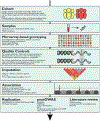Sex-Stratified Genome-Wide Association Study in the Spanish Population Identifies a Novel Locus for Lacunar Stroke
- PMID: 39315829
- PMCID: PMC12039539
- DOI: 10.1161/STROKEAHA.124.047833
Sex-Stratified Genome-Wide Association Study in the Spanish Population Identifies a Novel Locus for Lacunar Stroke
Abstract
Background: Ischemic stroke (IS) represents a significant health burden globally, necessitating a better understanding of its genetic underpinnings to improve prevention and treatment strategies. Despite advances in IS genetics, studies focusing on the Spanish population and sex-stratified analyses are lacking.
Methods: A case-control genome-wide association study was conducted with 9081 individuals (3493 IS cases and 5588 healthy controls). IS subtypes using Trial of ORG 10172 in Acute Stroke Treatment criteria were explored in a sex-stratified approach. Replication efforts involved the MEGASTROKE, GIGASTROKE, and the UK Biobank international cohorts. Post-genome-wide association study analysis included: in silico proteomic analysis, gene-based analysis, quantitative trait loci annotation, transcriptome-wide association analysis, and bioinformatic analysis using chromatin accessibility data.
Results: Identified as associated with IS and its subtypes were 4 significant and independent loci. Replication confirmed 5p15.2 as a new locus associated with small-vessel occlusion stroke, with rs59970332-T as the lead variant (beta [SE], 0.13 [0.02]; P=4.34×10-8). Functional analyses revealed CTNND2 given proximity and its implication in pathways involved in vascular integrity and angiogenesis. Integration of Hi-C data identified additional potentially modulated genes, and in silico proteomic analysis suggested a distinctive blood proteome profile associated with the lead variant. Gene-set enrichment analyses highlighted pathways consistent with small-vessel disease pathogenesis. Gene-based associations with known stroke-related genes such as F2 and FGG were also observed, reinforcing the relevance of our findings.
Conclusions: We found CTNND2 as a potential key molecule in small-vessel occlusion stroke risk, and predominantly in males. This study sheds light on the genetic architecture of IS in the Spanish population, providing novel insights into sex-specific associations and potential molecular mechanisms. Further research, including replication in larger cohorts, is essential for a comprehensive understanding of these findings and for their translation to clinical practice.
Keywords: Spain; genome-wide association study; genomics; ischemic stroke; stroke.
Conflict of interest statement
Dr Arenillas reports compensation from Medtronic, Daiichi Sankyo, Boehringer Ingelheim, and Pfizer for consultant services; grants from AstraZeneca, Instituto de Salud Carlos III, European Commission and Gerencia de Salud Castilla y León; compensation from Philips for data and safety monitoring services; travel support from Daiichi Sankyo Company. Dr Ribo reports stock holdings in Methinks, Nora, and Ancaonda Biomed; compensation from Cerenovus, Vesalio, Stryker Corporation, Philips, Rapid Pulse, AptaTargets, and Medtronic MiniMed Inc for consultant services; compensation from Sensome for data and safety monitoring services. Dr Heitsch reports employment by Washington University School of Medicine in St. Louis; reports funding from National Institutes of Health and American Heart Association. Dr Dhar reports grants from National Institute of Neurological Disorders and Stroke. The other authors report no conflicts.
Figures
References
-
- Bevan S, Traylor M, Adib-Samii P, Malik R, Paul NLM, Jackson C, Farrall M, Rothwell PM, Sudlow C, Dichgans M, et al. Genetic Heritability of Ischemic Stroke and the Contribution of Previously Reported Candidate Gene and Genomewide Associations. Stroke. 2012;43:3161–3167. - PubMed
-
- Traylor M, Farrall M, Holliday EG, Sudlow C, Hopewell JC, Cheng Y-C, Fornage M, Ikram MA, Malik R, Bevan S, et al. Genetic risk factors for ischaemic stroke and its subtypes (the METASTROKE collaboration): a meta-analysis of genome-wide association studies. Lancet Neurol. 2012;11:951–962. - PMC - PubMed
-
- Malik R, Chauhan G, Traylor M, Sargurupremraj M, Okada Y, Mishra A, Rutten-Jacobs L, Giese A-K, van der Laan SW, Gretarsdottir S, et al. Multiancestry genome-wide association study of 520,000 subjects identifies 32 loci associated with stroke and stroke subtypes. Nat. Genet 2018;50:524–537. - PMC - PubMed
Publication types
MeSH terms
Grants and funding
LinkOut - more resources
Full Text Sources
Miscellaneous



